Book organization ideas – top designers share 10 different ways to display your books
Leading interior designers share book organization ideas to display your books or create a home library, no matter how much space, or many books you have
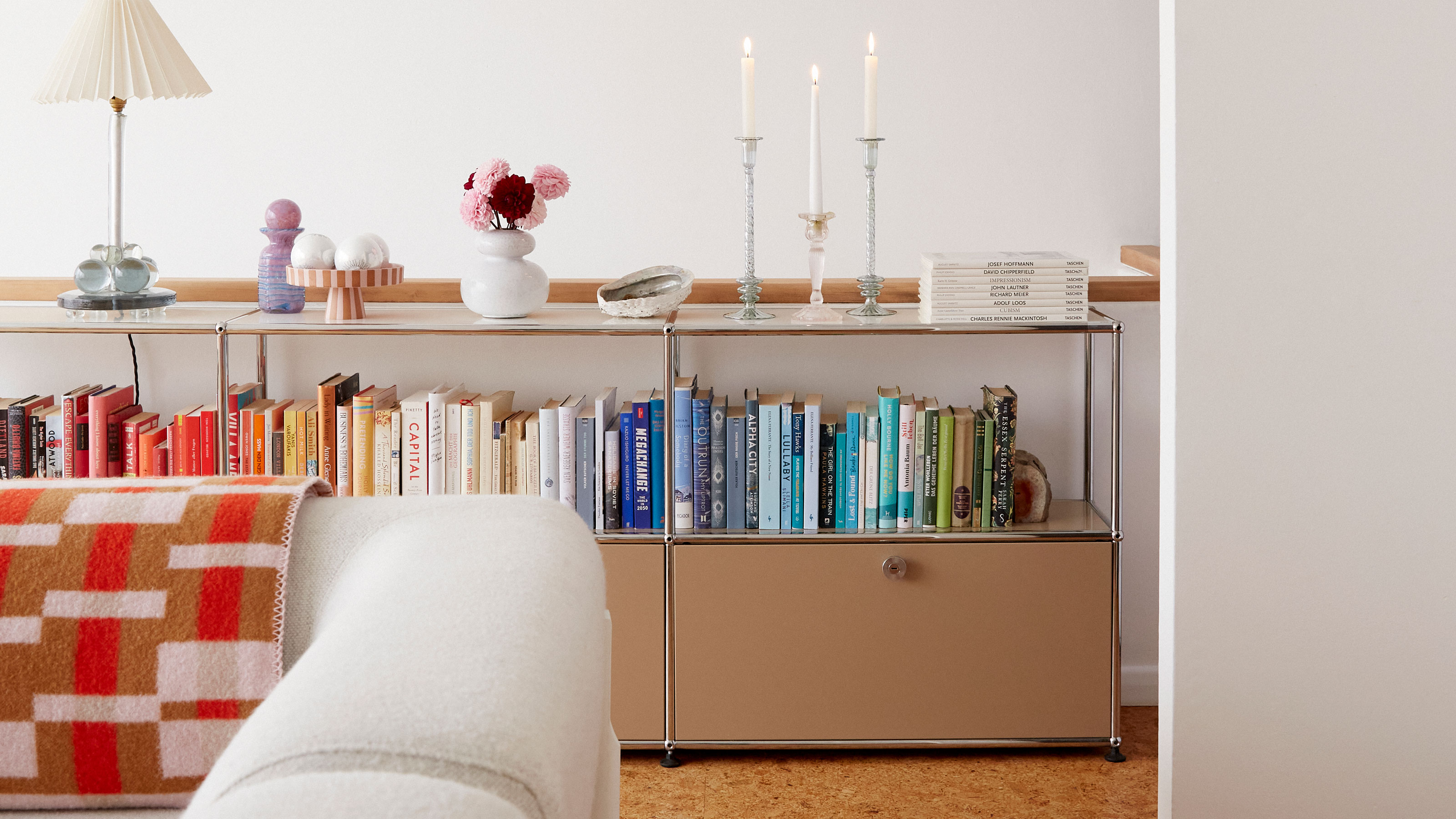

The challenge of book organization ideas is balance. Book-lovers want a method that will inspire them to read more, but also to find the books they are looking for. You don’t want it to look like a bookstore, it’s your home after all, but finding a way of categorizing them not only makes books easier to find, but will also create an interior design feature that will enhance your living space.
There are, thankfully, a variety of ways you can organize books in your space, whether you have a large library, a bookshelf's worth or you keep a small, minimal reading list. How you store and display them might depend on what living room storage you have, for example, but the process of organizing them can be treated the same.
Here, we've curated a library of top tips from organizers and designers for storing your books practically, but also in style.
Book organization ideas for sorting your shelves
No matter what type of reader you are, book-lovers always want more books, whether or not they have time to read them. If your books are a mixture of ones you have read and ones you haven’t gotten to yet, think about creating a to-be-read shelf. Place them within arm’s reach of your favorite reading spot.
If you read across genres - contemporary fiction, fantasy, memoir, science fiction – it can be useful to shelve books according to your most-used categories. Just be sure to keep a bit of open shelf space around each section if at all possible to leave room for future purchases. And remember, it’s your library, so you get to make the rules.
1. Display by color
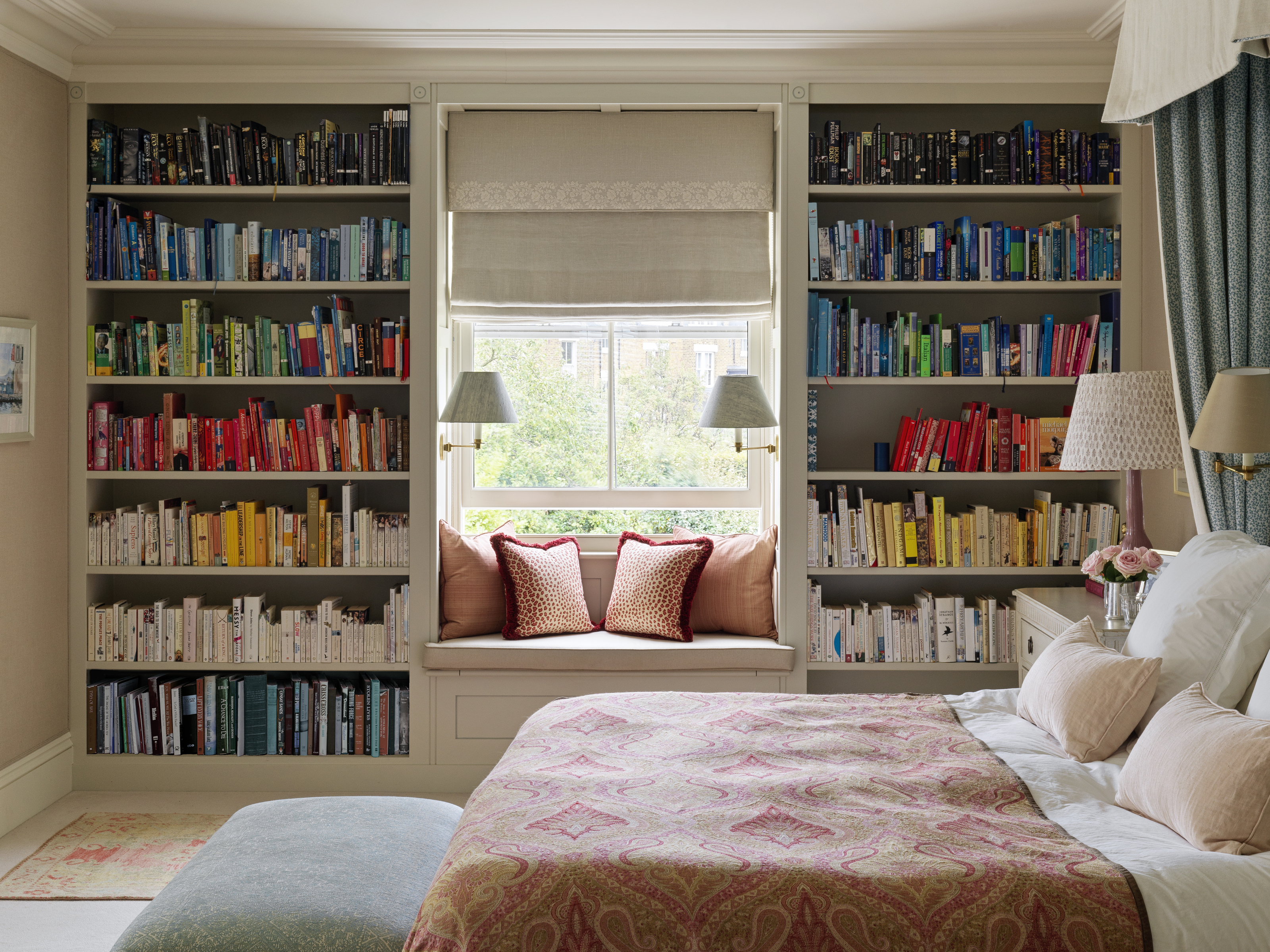
For a modern shelving idea, arranging books by color makes for a beautiful interior design feature and it’s simple to do. Here, they are in small blocks of color across the shelves, so it doesn’t look too regimented, further enhanced by the vintage, buff-colored books laid horizontally at the bottom and a collection of china in the middle section.
‘The different colors, textures and prints on the covers add eye-catching detail,’ says Emma Deterding, founder of Kelling Designs. ‘It creates a rainbow effect which is an effective way to introduce color and pattern to a space using books you already have and love.’
'Also, when organizing by color, organize from big to small,' adds Amy Vance owner of Eco Modern Concierge.
2. Design a library corner

If you have a lot of books, floor-to-ceiling shelving is the ideal solution for an easy to create home library idea and creates a wonderful backdrop to furniture like these burnt orange sofas. Bold, teal silk curtains add color and a fabulous ceiling light is the perfect talking point in this living room corner.
In this design by Victoria Maria, some books have been placed onto shelving spine-first, reducing the amount of color on show. This controversial technique is loved by those looking to display books but also keep a tight color palette, but it's not always the most useful for helping find the book you need.
3. Curate a collection
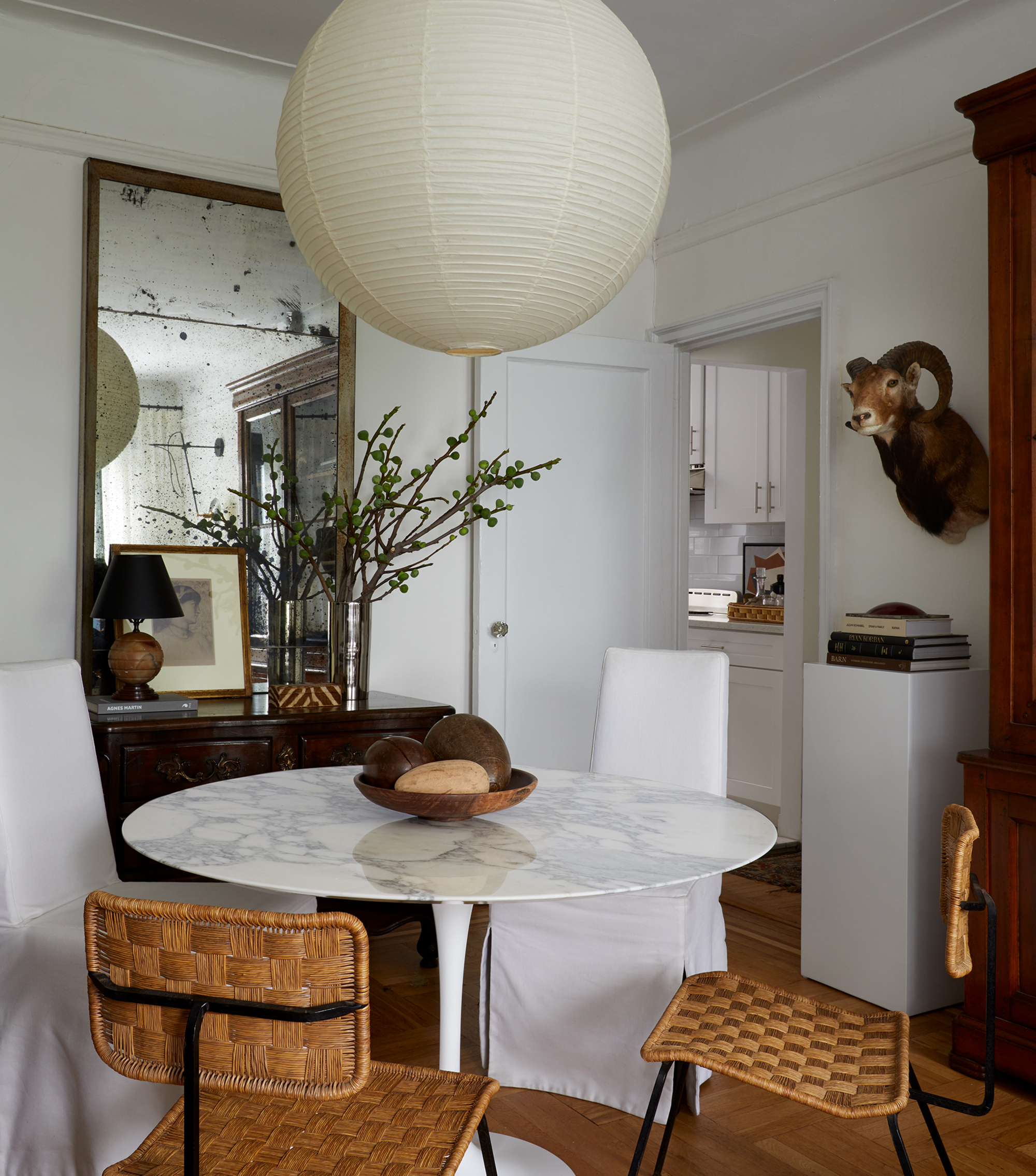
If you run out of space in the bookcase, stack a small selection of special books on top of a pedestal or plinth for an elegant living room idea. ‘We use books to create an instant collection and story in the room,’ says interior designer, David Frazier. ‘We usually know our clients well enough to curate a collection based on their interests or enhance their existing library.
'When displaying books on a table or surface, we often stack two to three and will add a small object on top. On shelves, we love to stack books both vertically and horizontally, often in a mixed combination, layered with interesting pottery, natural or found objects.’
4. Make use of a recess
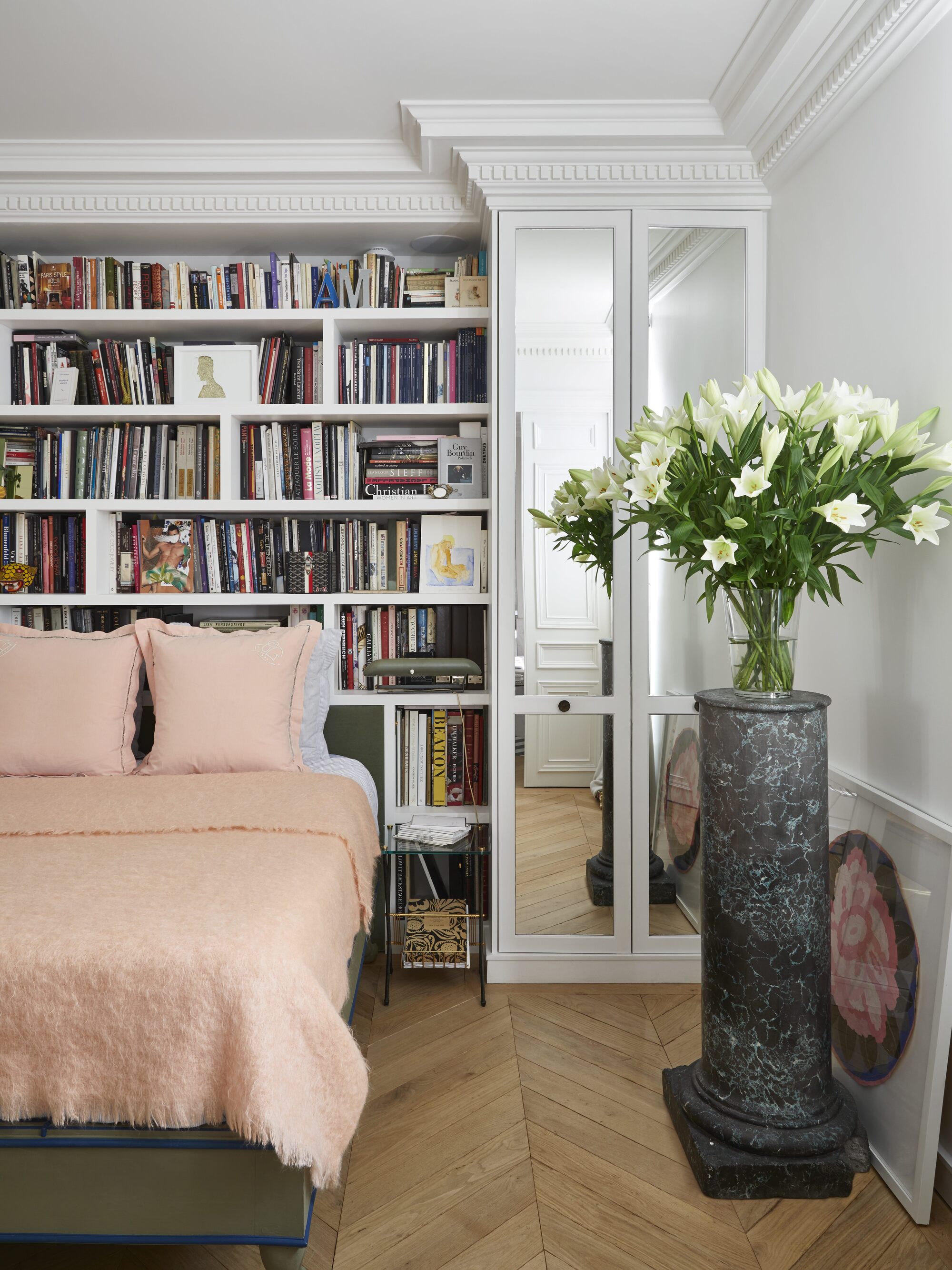
Build shelving into a recess, it’s a great use of space and the perfect place for books, as demonstrated by this clever bedroom storage idea. ‘This book shelving unit is functional yet adds to the character of the room,’ say Emil Humbert and Christophe Poyet of Humbert et Poyet.
‘The bookshelf is topped with square blocked neo-classical style cornicing that lines the ceiling. The shelving displays an eclectic collection of books and small artworks, such as collages by Damien Blottiere and Scott Ramsay, making the room more personal and homely.’
5. Create an alcove

Building a false wall behind a bed means an alcove can be created for a small bookshelf, while also creating an effective headboard idea. ‘We are noticing a need to create spaces for wellbeing and transcend notions of simple functionality or aesthetics,’ say Thomas Vevaud and Raphael Le Berre of Le Berre Vevaud.
‘Clever architectural details provide space for more personal touches. The built-in bookshelf above the bed is minimal but functional, allowing space for books and small decorative objects with a shelf for floral arrangements or larger decorative pieces. A book reader light by Meljac is practical and efficient.’
6. Devise a reading corner
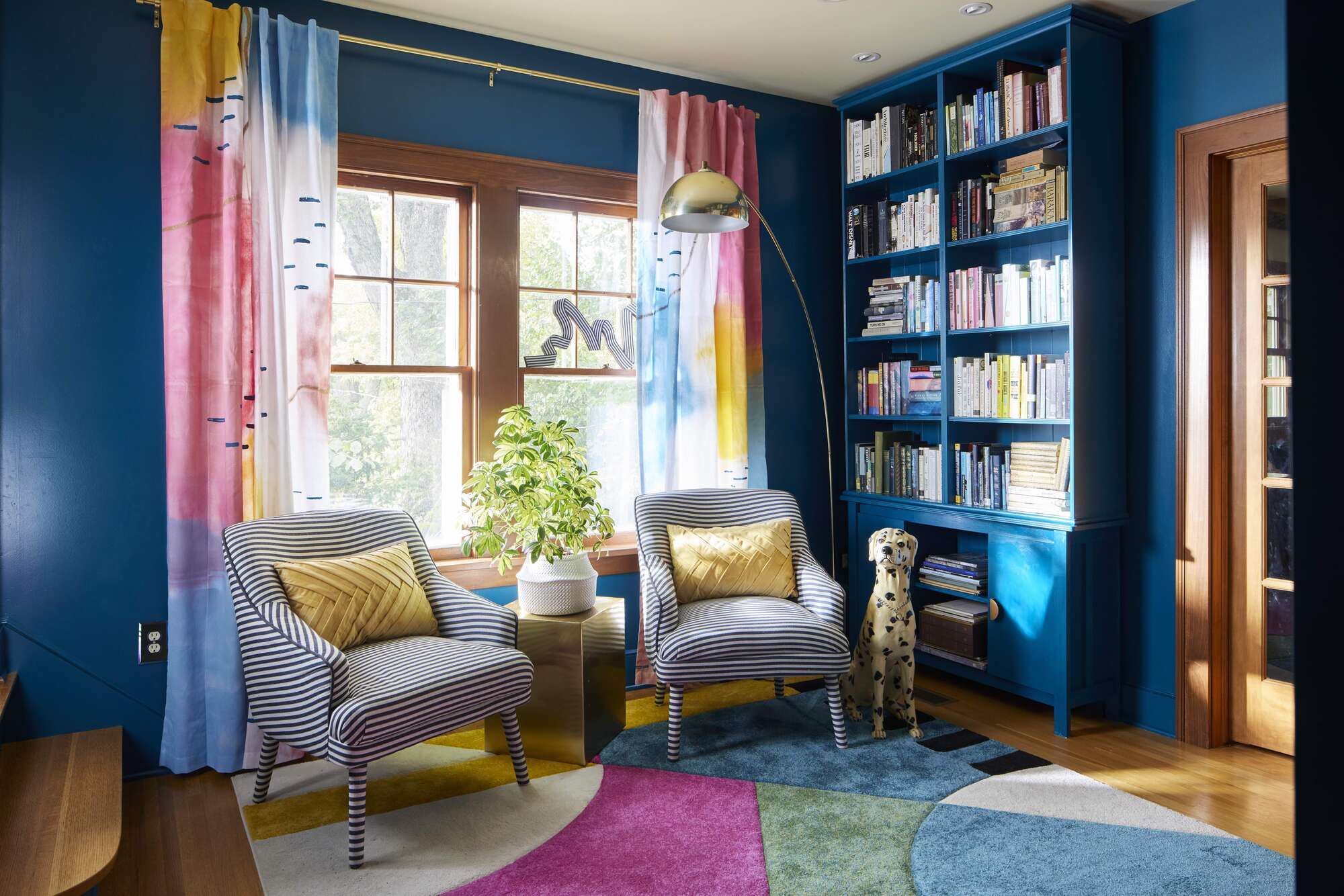
Color and pattern play a big part in the home library of art gallery owner, Liz Lidgett, ‘It seems people fall into two camps: people who love to sort books by color and those who sort by subject – and they always marry each other, says Liz.
‘I think that books work as a perfect backdrop for artwork in the same way that a bold paint color on your walls or a wallpaper can, I also place the books in different directions to keep the eye moving around the library and to create visual interest.’ Place armchairs in the space to create the a cozy living room idea and beckoning reading nook.
7. Compose an open library
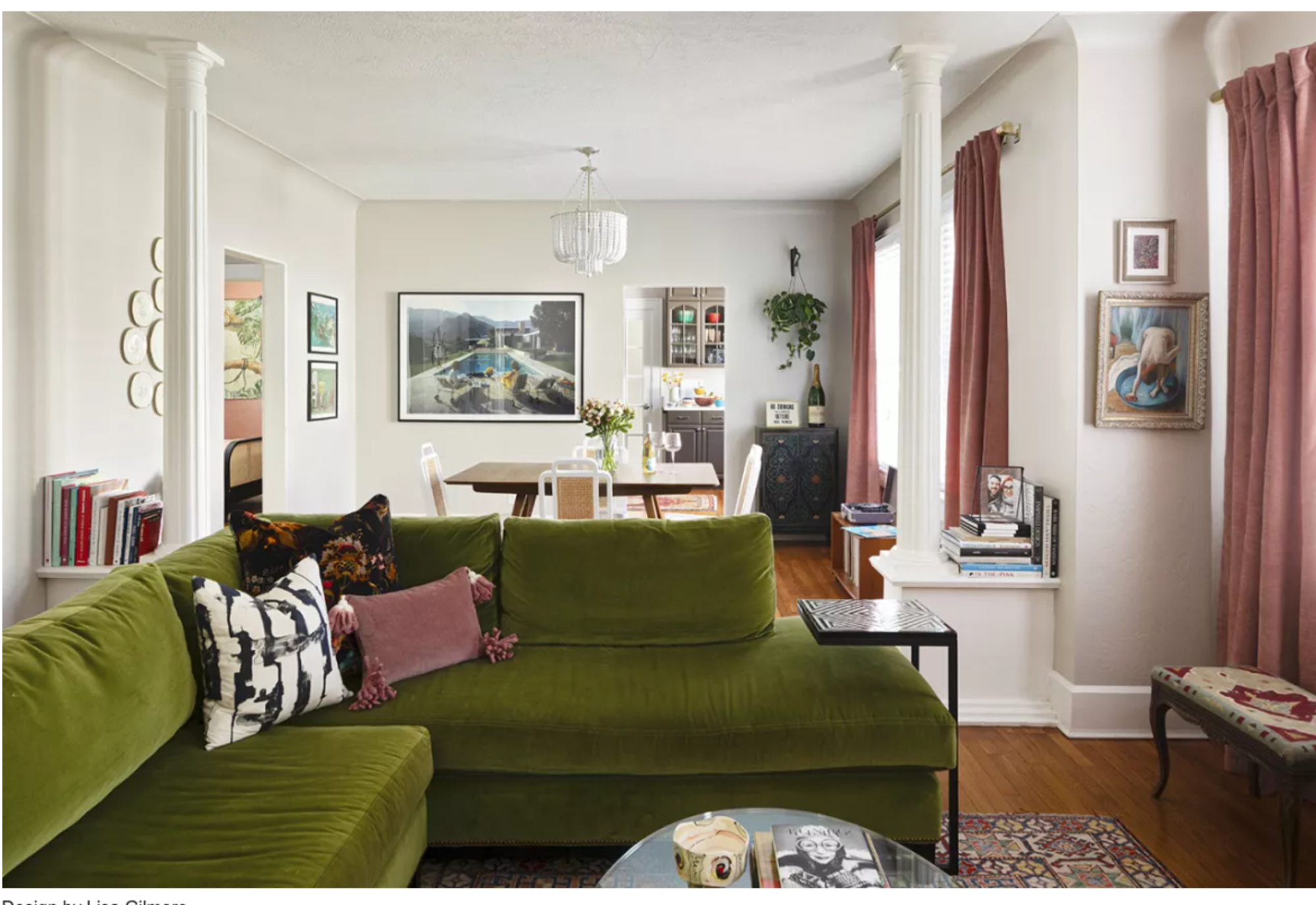
You don’t have to have bookshelves or bookcases to display your books, whether that's as coffee table decor or on side tables. Here they have been displayed on plinths next to two pillars. Some are upright, some are laid down. This way of having books on display, but not in the way, is a wonderful approach to allowing your personality to shine through into the home.
‘I have an embarrassing amount of coffee table books,’ says interior designer Lisa Gilmore. ‘And not a lot of space for them. And so the pillars just grew into an open library, where I pile the ones I’m reading for easy access. I’m always rearranging them too.’
8. Make a design statement with architectural detailing
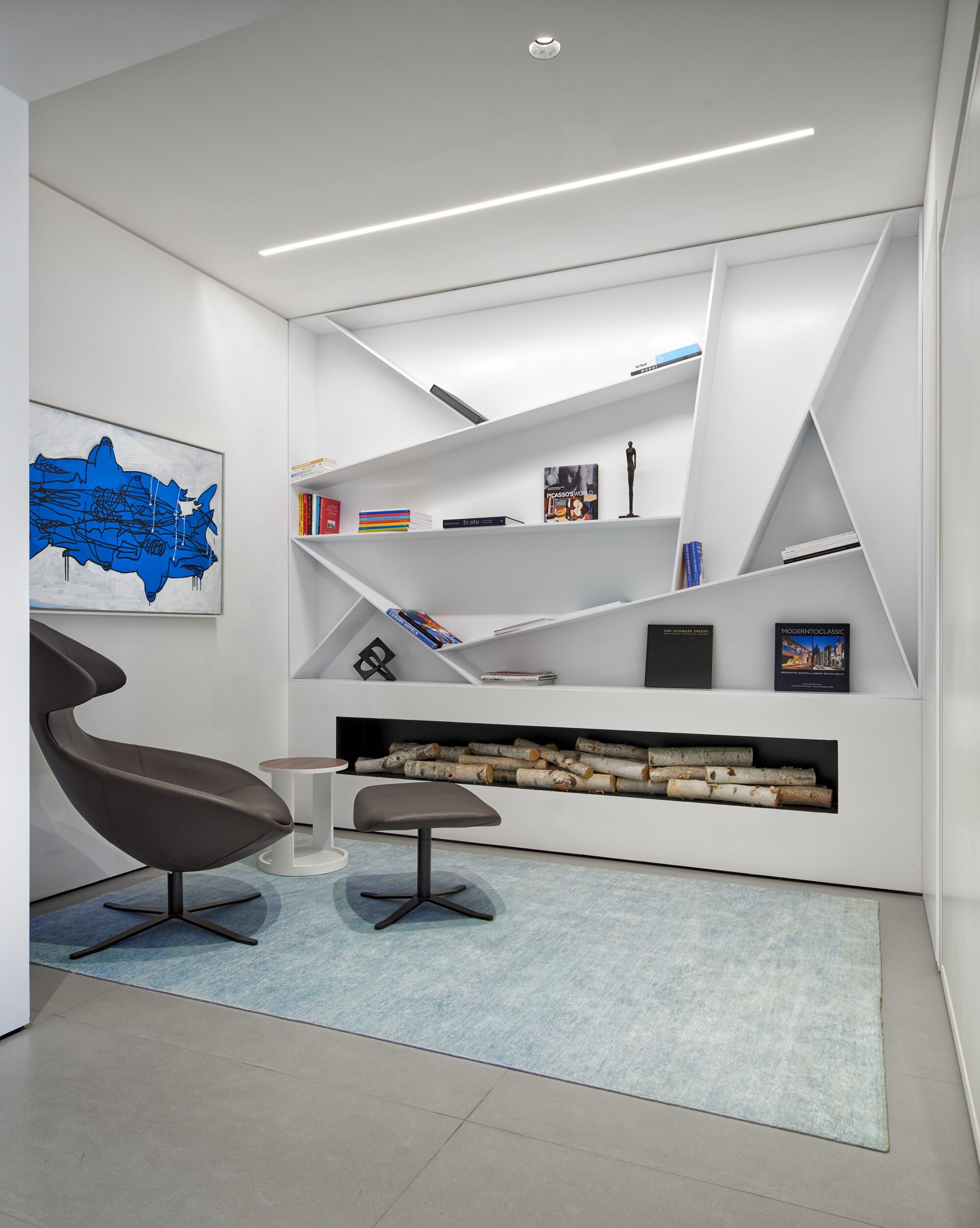
A flex room has many uses, so it needs to be versatile. ‘My favourite room to design in a house is the library,’ says Mary Maydan, founder of Maydan Architects. ‘Libraries bring character and warmth.
We custom design each library to the homeowners needs. In cases where there are fewer books to store and we want to make a design impact, diagonal shelving units are very neat. This room is a stunning way to make a statement with books, they don’t have to be stored vertically or horizontally.’
9. Compose a library for a collector
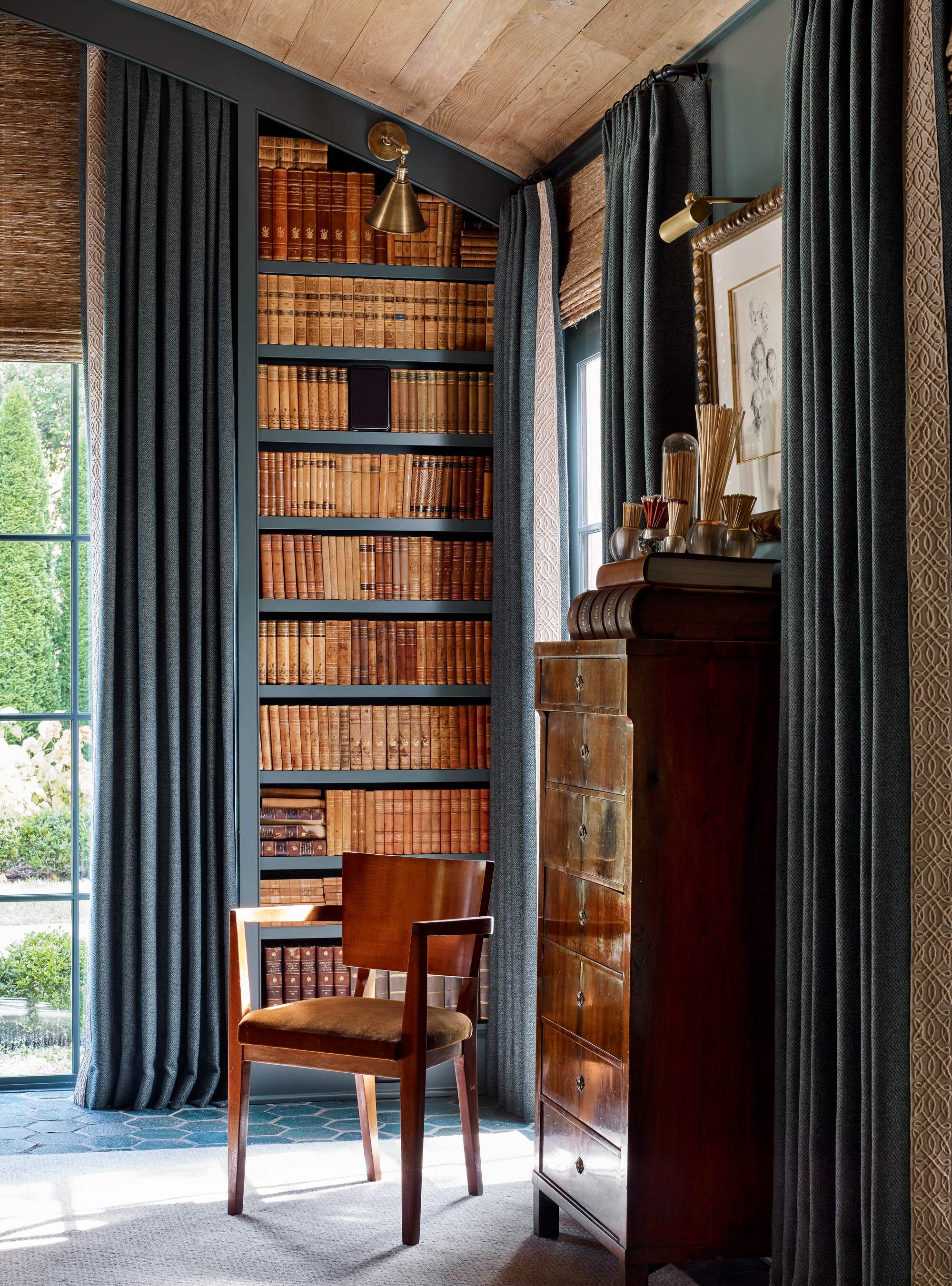
Books play a big part in interior designer, Roger Higgins life and he is an avid collector of vintage tomes, using them in his own home and also in client’s interior design projects. ‘I love to use vintage books to style the bookshelves,’ says Roger. ‘Their patina and the gorgeous tones of the leather bindings mix well with just about any interior palette or pattern. They add an interesting touch visually, but are also practical and have a purpose versus being strictly decorative. When displaying them, keep in mind that they don’t have to match perfectly. In fact it often looks prettier if you have a range of tones – from chocolate brown to tan for example – and add a stack here and there that are placed horizontally versus vertically.
We also like to use books – vintage or new – to add height and create an interesting space on which to display collections. In our library, here for example, we piled books to create a pretty pedestal of sorts to show our collection of match strikes. I also sometime use a stack of large books – such as accounting ledgers or something similar – next to a chair or sofa as a small drinks table. It just adds a hint of layering and texture that makes a room feel like someone really lives there.’
10. Keep it simple

Celia and Joti are home organizers offering solutions to clients with their company The Savvy Space and created this look. ‘If you are looking for a sleek style, this co-ordinated library system is the perfect solution.’ Says Celia. ‘We wrapped all the client’s books in craft paper and added handwritten titles for a chic, eclectic touch.’
It's a quirky take on the interiors trend of having your books outward facing. ‘A subtle and modern way to display books is by flipping them round so all you see is a wall of white or beige for a cleaner look,’ says Amanda Huber, owner of the Dining Chair Co.
Book decluttering tips from the home organizers
When it comes to books, people who tend to have a lot, really love them and that makes letting some go challenging. ‘We like to focus on the category,’ says Ben Soreff of House to Home Organizing. ‘Books that go on the shelf are either 1. ones you actually still need to read. 2. Ones you have read and really loved. 3. Ones you have read but will never read again but you just need to keep (I call this the To Kill a Mockingbird category). And 4. Books that are décor - perhaps antique or vintage books that just look cool. Keepsake books should be kept more remotely with other sentimental items and not on the bookshelf. Reference books (if not a keepsake) basically have no value. We focus on how hard books are to get and how expensive they are. Airport novels like the Da Vinci Code typically do not need to be kept. For children's books many might be childhood keepsakes and should live with sentimental items elsewhere in the house.’
If you are looking to streamline your books, decide what to declutter and ask yourself these questions, says Amy Vance, owner of Eco Modern Concierge.
‘Do you reference it? Have you read it? Will you read it? Does it serve a specific purpose? Why do you have it or how did you obtain it? What is your reason for holding onto it?'
‘Some of our favorite ways to organize books are by category, by author, alphabetically, by color or by height, says Amy Vance owner of Eco Modern Concierge.
‘Organizing books by author is the classic way that you often see at the library or in bookstores. This makes it really easy and helpful when you know what you are looking for.
‘On a bookshelf, store your books with the biggest at the bottom and the smallest at the top,' adds Samantha Wilson, interior designer and founder of Collection Noir, 'maybe grouping them alphabetically, by author, or collection.'
If your shelves are more for display, layer your books with ceramics, photographs, prints and plants. Always position things in odd numbers of threes and fives and start by layering books on various shelves, then drop in any larger ornamental pieces such as vases or plants. Smaller book collections can be placed between decorative bookends. Step back and assess to ensure the overall look is balanced and remove any items that make your shelving look too cluttered, less is always more!’ There is also increased use of lighting within bookshelves, books can be spot lit and become almost works of art in their own right.
matter what type of reader you are, book-lovers always want more books, whether or not they have time to read them. If your books are a mixture of ones you have read and ones you haven’t gotten to yet, think about creating a to-be-read shelf. Place them within arm’s reach of your favorite reading spot.
If you read across genres - contemporary fiction, fantasy, memoir, science fiction – it can be useful to shelve books according to your most-used categories. Just be sure to keep a bit of open shelf space around each section if at all possible to leave room for future purchases. And remember, it’s your library, so you get to make the rules. There are some gorgeous sets of books available, with cloth and leatherbound classics, some with tooled, decorated, beautiful covers that are a work of art in themselves. The Folio Society or Juniper Books offer a design service where you can create a one-of-a-kind book set with illustrations that look beautiful on the shelf.
Another way to declutter is to stack a selection of your favorite books in a pile. ‘Choose books of different sizes to add dimension and opt for complementary covers, then layer these with other ornaments such as a vase or potted plants for an effortlessly chic look,’ says Samantha Wilson, interior designer and founder of Collection Noir. ‘For those really prized, special edition coffee table books, I would display them independently or in small piles of three books,’ says Amanda Huber owner of the Dining Chair Co. ‘Simply place them on your coffee table or console with the spines facing outwards and display other prized ornaments and photographs around them to create little vignettes. However you want to organize, here is the best way to create a library feel in your home with these book organization ideas.
Be The First To Know
The Livingetc newsletters are your inside source for what’s shaping interiors now - and what’s next. Discover trend forecasts, smart style ideas, and curated shopping inspiration that brings design to life. Subscribe today and stay ahead of the curve.

Alison Davidson is well-respected British interiors journalist, who has been the Homes Editor of Woman and Home magazine, and the Interiors Editor for House Beautiful. She regularly contributes to Livingetc, and many other titles, and often writes about kitchens, extensions, and decor ideas. She is the go-to for information about green energy, sustainable home improvement and eco design ideas.
-
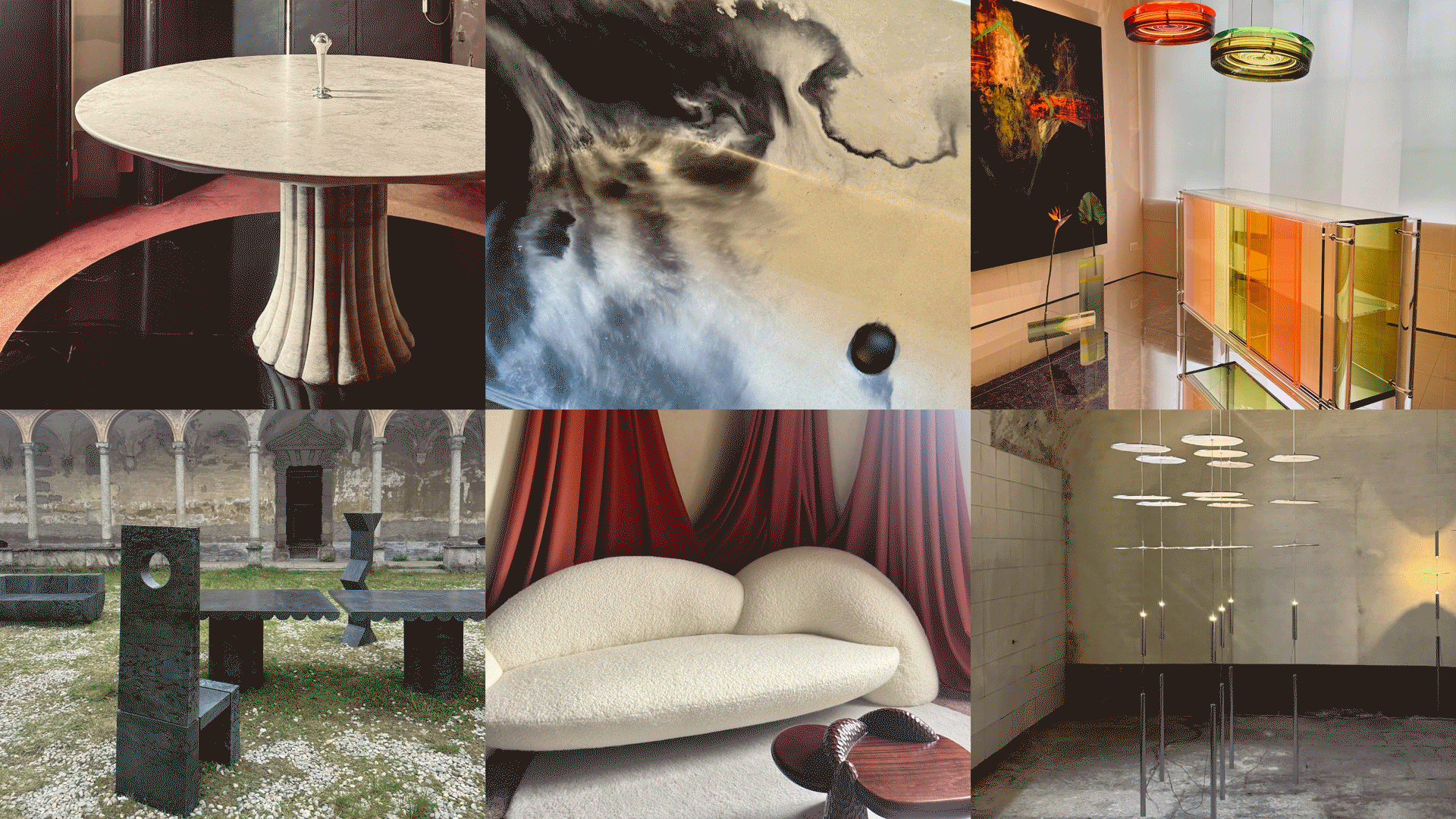 Straight from Salone: Five Emerging Trends I Found That'll Shape Interiors For the Year Ahead
Straight from Salone: Five Emerging Trends I Found That'll Shape Interiors For the Year AheadFrom reflective silver to fluidity, here's my perspective on the key themes and new moods coming through from Milan Design Week
By Sarah Spiteri Published
-
 9 Bathroom Storage Mistakes You're Probably Making That Make Using This Space Much Harder — And What to Do Instead
9 Bathroom Storage Mistakes You're Probably Making That Make Using This Space Much Harder — And What to Do InsteadDiscover which mistakes are to blame for your overcrowded and cluttered bathroom
By Seraphina Kyprios Published